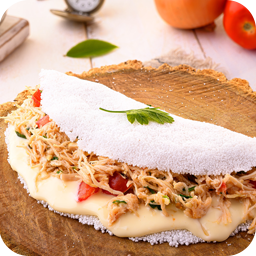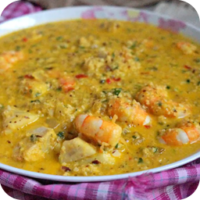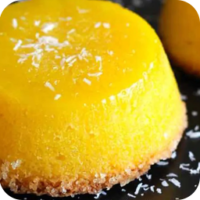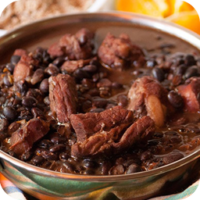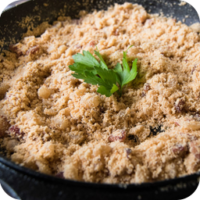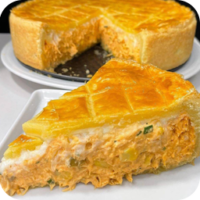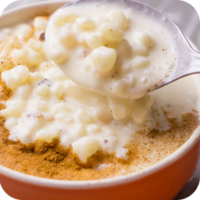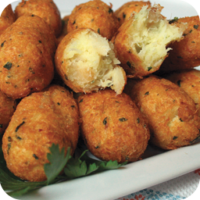Tapioca is a traditional Brazilian dish made from tapioca flour, which is derived from the cassava root. It is particularly popular in the northeastern region of Brazil, where it is enjoyed as both a savory and sweet snack or meal. The dish consists of a gluten-free pancake-like creation, which is typically filled with a variety of ingredients.
Key Features of Brazilian Tapioca:
- Main Ingredients:
- Tapioca Flour: The key ingredient, also known as “polvilho doce,” is made from cassava root.
- Water: To hydrate the flour and form the pancake.
- Fillings: Savory options often include cheese, ham, herbs, or vegetables, while sweet varieties feature fillings such as coconut, condensed milk, or chocolate.
- Preparation:
- The tapioca flour is sifted onto a hot, lightly greased skillet, where it’s then pressed and cooked to form a flat, slightly crispy pancake.
- Fillings are added to the pancake, and it is folded in half, similar to a crepe or a taco.
- The tapioca pancake is cooked until the edges crisp up, but the inside remains soft and warm.
- Serving:
- Savory Tapioca: Filled with cheese, ham, chicken, or other savory ingredients. It’s often enjoyed as a breakfast or snack.
- Sweet Tapioca: Filled with sweet ingredients like coconut, chocolate, or fruits, often eaten as a dessert or afternoon treat.
Variations:
- Tapioca with Cheese: A common and beloved filling, often paired with butter or herbs.
- Tapioca with Coconut: A sweet variation where grated coconut and sugar are used as the filling.
- Tapioca with Fruit: Fresh fruits like banana, strawberry, or mango are sometimes used in sweet versions of tapioca.
- Tapioca with Condensed Milk: A favorite treat for those with a sweet tooth, especially popular in the afternoon or as dessert.
Cultural Significance:
- Northeastern Brazil: Tapioca is particularly associated with the northeastern states of Brazil, where cassava is abundant.
- Traditional Brazilian Breakfast: Tapioca is often enjoyed as a quick breakfast or snack, especially in the morning or during celebrations.
- Gluten-Free: As tapioca flour is naturally gluten-free, the dish is widely enjoyed by those with gluten sensitivities or dietary restrictions.
Nutritional Value:
Tapioca is a carbohydrate-rich dish and provides energy, but it is relatively low in protein and fat. Depending on the fillings, it can be made more nutritious by adding protein-rich ingredients (such as cheese or eggs) or incorporating fruits and vegetables.
Fun Fact:
- Tapioca in Brazil is often cooked fresh and served immediately, making it a customizable and quick meal or snack.
- It is sometimes used as a base for “tapioca pizza,” where toppings like cheese, tomatoes, and other pizza ingredients are added.
Summary:
Tapioca is a versatile and delicious Brazilian dish made from cassava flour, enjoyed as both a savory and sweet snack. It is a gluten-free, easy-to-make treat, perfect for breakfast, lunch, or dessert, and is loved for its simplicity and adaptability in terms of fillings.

